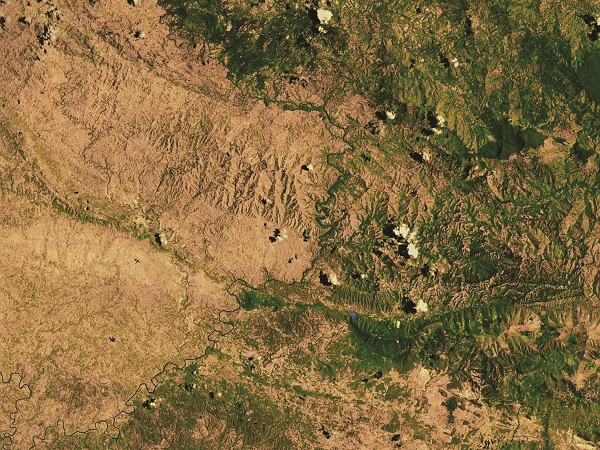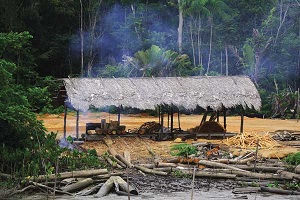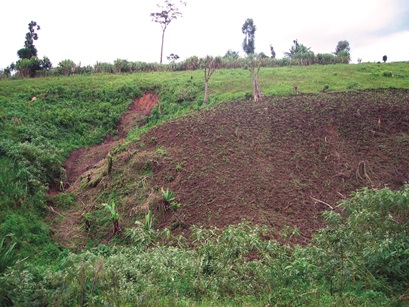Deforestation
People have always cut down trees. Some were/are harvested to provide wood for fuel and lumber to build houses and ships. Other trees are harvested to clear land for agriculture and housing. Wood is a renewable, carbon-neutral energy source when managed correctly, but when done improperly timber harvesting often leads to soil degradation and other environmental issues.
Deforestation can have destructive effects on soils. Deforestation, as defined by the United Nations, is the permanent removal of trees until there is less than 10% of the forested land remaining. Since the beginning of the Industrial Revolution, humans have removed more than half of the original forest cover on Earth. In the United States, one early explorer of the Midwest noted that a squirrel could jump from tree to tree all the way from Pennsylvania to the Mississippi River without ever touching the ground!
The same kind of deforestation is occurring today in tropical rainforests, which are cleared to develop cropland to feed a burgeoning population.
The effects of tree loss on soil are significant. Trees and shrubs shield the ground from the force of raindrops and provide shade that reduces surface soil temperature, which in turn reduces evaporation. Logging and small-scale removal of trees exposes soil to rain splash which loosens and dislodges soil particles, eroding soil and creating a more impermeable bare surface, which increases runoff.



Above: An example of deforestation and erosion.
Learn more about the Challenges of Deforestation through an example of a historical case, modern case, and forward look at this issue.
Back to the Human/Soil Interactions Page
Back to the Rainforest Biome Page
Back to the Temperate/Boreal Page



